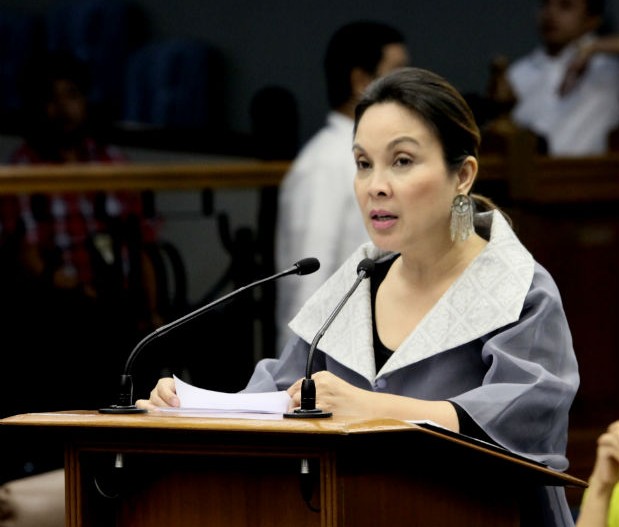Legarda presses national, local gov’ts to prepare for La Niña
Senator Loren Legarda is urging the government to brace for the La Niña phenomenon, which she said is expected to bring heavy rains in the succeeding months, through effective climate-resilient and disaster risk reduction (DRR) programs.
Legarda, chair of the Senate committees on climate change and finance, said the government should utilize funds for disaster preparedness and climate adaptation to “immediately and effectively prepare for La Niña.”
Communities in landslide-prone areas, she said, should already have been relocated “not only due to the impending La Niña but also because such areas should not be inhabited in the first place.”
“We have to be ready for the impacts of La Niña even as we continue to help drought-affected communities recover from the effects of El Niño,” Legarda said in a statement Monday.
READ: El Niño dries up Asia as its stormy sister La Niña looms
Article continues after this advertisementThe senator said government agencies on the national and local levels must work together to help communities to be hit by the La Niña adapt to the phenomenon.
Article continues after this advertisement“Desilting and dredging of rivers, canals and drainage systems should already be underway to reduce or prevent flooding,” she said.
“Meanwhile, communities in landslide-prone areas should already have been relocated not only due to the impending La Niña but also because such areas should not be inhabited in the first place,” she added.
Legarda pointed out that the Philippine Atmospheric, Geophysical and Astronomical Services Administration (Pagasa) has already issued a La Niña watch after new predictions suggest further weakening of El Niño and the probable arrival of La Niña by the second half of 2016.
READ: Pagasa raises La Niña alert
During La Niña, she said, the country is expected to experience more than the normal rainfall as well as more typhoons.
The senator reminded local government units (LGUs) to enhance community-based disaster management and early warning system in their localities.
“Empowered and equipped with the necessary mandate, knowledge, skills and tools, LGUs should develop their own DRR and climate change adaption (CCA) plan of action within their jurisdiction to prevent the loss of life and minimize the damage to property brought about by extreme weather conditions, such as the expected La Niña,” she said.
Legarda said LGUs should improve disaster risk information through risk identification or assessment, make people more responsive to government-issued disaster warnings, reduce sources of risk and exposure of vulnerable sector by providing house upgrading and relocation options for settlers located in hazardous areas, and ensure effective disaster preparedness and recovery mechanisms by encouraging active participation of the vulnerable communities. IDL/rga
